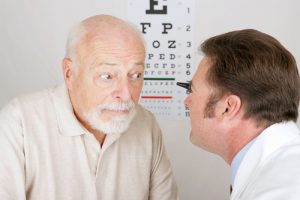 Always a fast-forward subject, stem cell therapy has seen some time in the spotlight recently.
Always a fast-forward subject, stem cell therapy has seen some time in the spotlight recently.
There has been a fair bit of promise in this genre of medicine where healthy stem cells are injected into your body to replace damaged or diseased cells.
Advertisement
When it comes to new treatments that help with something as fundamental to us as our vision, I am certainly paying attention! Stem cell treatments have now been proven successful in restoring sight loss because of Stargardt’s macular degeneration, a genetic eye disorder that causes progressive vision loss.
After three years of follow-up, researchers at the Jules Stein Eye Institute in Los Angeles, working with other American scientists, now say that embryonic stem cell therapy can help patients with this devastating eye disease without causing any major side effects.
The treatment is safe and most patients have improved vision
The therapy helped to restore the vision of more than half of all patients who took part in the study. But the new development didn’t come without some concerns. There was worry the cells would be rejected by participants’ immune systems or become overactive, eventually growing into tumors.
What makes this news so ground-breaking is the fact it’s the first time it has been proven safe for use in the long-term.
RELATED READING: New ‘bionic’ solution to improve your vision (the future is here!)
How new treatment helps eyesight
The study involved 18 patients who had two distinct types of macular degeneration. Normally, this can’t be treated effectively and is among the leading causes of blindness in adults and children.
But nine patients with Stargardt’s and nine with what’s called dry atrophic age-related macular degeneration had 50,000 to 150,000 retinal pigment cells injected behind the retina of their worst-affected eye. Scientists created the pigment cells in the lab by treating human embryonic stem cells (hESCs) with chemicals that make them transform into retinal cells.
Perhaps what’s most interesting is that one of the participants, a 75-year-old Kansas horse rancher, was completely blind in the eye that was treated. Just one month after the therapy, his eyesight had improved so much that he was able to ride horses again. Meanwhile, others were able to use their personal computers or read their watch again, and drive to the mall or the airport independently as well.
These may seem like little things to most people, but they made a significant difference in participants’ quality of life and mean big things for the future of stem cells for eyesight.
The miracles of stem cells
If the subject of stem cells and stem cell research is sounding a bit foreign to you, you aren’t alone. They are quite amazing. They exist in the human embryo as building blocks for the developing body.
Scientists discovered how to collect embryonic stem cells from mouse embryos in 1981. By 1998, they found the method to extract stem cells from human embryos and grow the cells in the laboratory. Now scientists can remove stem cells from adult tissue and use these for transplant.
As the National Institutes of Health explains, stem cells can turn into many different types of cells in your body. In many tissues, they can serve as a kind of internal repair system, dividing up with almost no limitations while replenishing other cells.
When a stem cell divides, each new cell can either stay a stem cell or just become another type of cell with a more specific function, like a brain, muscle or red blood cell, for instance.
RELATED READING: Another good reason to raise a glass of red wine
Our body’s own repair shop
In some bodily organs, such as bone marrow and the gut, stem cells routinely separate to repair and replace worn out or damaged tissues. In other organs, however, like the heart and pancreas, stem cells only divide under unique conditions.
Because of their special, regenerative abilities, stem cells have the potential to treat diseases like heart disease and diabetes, as well as any other issue that cell and tissue regeneration is helpful. But much more research needs to happen before stem cell therapy can be fully understood.
Advertisement
One thing is for sure: Stem cell research will continue to further our knowledge about how healthy cells replace damaged cells in adult organisms. This is bound to lead to more scientific discoveries for stem cell transplants to address disease. I think that’s a message of hope for many of us.
Related Reading: 10 ways to improve night vision naturally
Related Reading: Why Blurry Vision Isn’t Just Annoying – it’s Deadly
